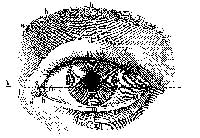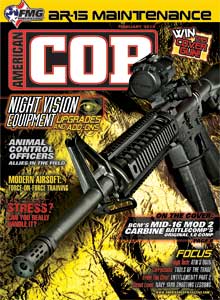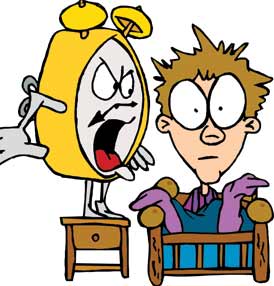
correct-eye
The officer’s boots made irregular thuds as he walked down the cellblock range. His keys rattled from the clip holding them securely to his utility belt. A message crackled on the radio that sat next to his protective glove pouch, mini mag light and handcuffs. In his shirt pocket were a pen and notebook. Back in his office, an intercom, computer, count board, telephone, door controls and various logbooks completed his equipment arsenal.
I conjured up this vision when editor Suzi asked me to write about equipment most essential to a corrections officer’s daily work. I quickly realized it’s not the product manufacturers who make the most important equipment for effective prisoner control. Essential is a big word and should relate to what corrections officers do the majority of the time — boots are the closest thing to essential mentioned so far. But where in the world would boots be if it weren’t for the feet you put in them?
Walking & Observing
The most important tools for a corrections officer are feet and eyes. This is not a job done from an office or squad car. Boots are nice, but can be noisy. Actually, if an officer doesn’t learn to control the sound of footsteps and jingle of keys, rounds are ineffective in monitoring inmate behavior. Irregular, quiet and frequent rounds throughout the prison are the single most effective form of controlling inmate behavior.
Radios have a volume control and can be used with an earpiece. Prisoners need to learn officers are going to be there — just not when. Feet will get them there, and eyes will view all they need to see and know. Monitoring prisoners is all about getting to where they are without them knowing you’re on your way and showing they can expect frequent yet irregular visits. Running is sometimes important, but not nearly as important as walking softly … the big stick you hear so much about is largely urban legend.
Talking & Touching
Skillful communication ranks right up there with feet and eyes. Effective verbal communication with co-workers and supervisors makes everyone’s job safer and easier. With inmates it can deescalate problems and convey expectations. Verbal communication summons help when needed. Conversely, written communication in the form of logbook entries, incident reports and conduct reports are integral to the job, so while a pen is nice to have, you can write it with a crayon or speak it into a computer program, provided your communication skills are adequate.
Knowing how to successfully communicate with different types of inmates, and knowing how to organize and convey thoughts and incidents in writing is imperative. Unfortunately, many a court case or misconduct hearing has gone awry because an officer didn’t communicate well enough. Many more have been adjudicated successfully because of well-written reports and effective oral testimony.
Searching is second only to making frequent rounds in an officer’s daily duties, making hands very important tools in corrections work. While cut-proof gloves and search mirrors are nice to use, hands are needed to use both and searches can be accomplished without mirrors and gloves. In cell- and area-searches, layers to be moved and searched frequently obstruct an officer’s line of sight. In patdown searches, hands are the primary tools in finding a concealed item an inmate is carrying. Hands write reports, type on keyboards, open doors, work radios and support verbal direction.
Committed To Memory
Ionce worked with an officer who remembered everything. His memory served the entire workforce. We’d ask him if he remembered the name of the blonde inmate who was first in line at chow last Tuesday and he’d tell us his name and housing assignment. It was like a game show with us.
Once, while in the rec yard I saw a fight; by the time we responded, the combatants had dispersed and mingled in with the other inmates. I had managed to get a good look at one of them and recognized him as the winner of a prison track event 2 years earlier. I called our memory expert and asked if he remembered the inmate’s name. He did and with this name I checked his files — bingo! — there he was. We picked him up and noticed he had some abrasions on his knuckles … but he couldn’t quite recall how they got there.
The inmate’s memory wasn’t nearly as good as it needs to be to become a good officer. A good memory is an excellent tool for a corrections officer to hone. You can’t buy that kind of memory online.
Memory, communication skills, eyes, hands and feet are my top five. Fortunately for us, we have equipment manufacturers to support and protect our natural-born gear.
By D.M. Chamberlain
Read More Corrections Articles
View The American COP February 2014 Issue Now!















